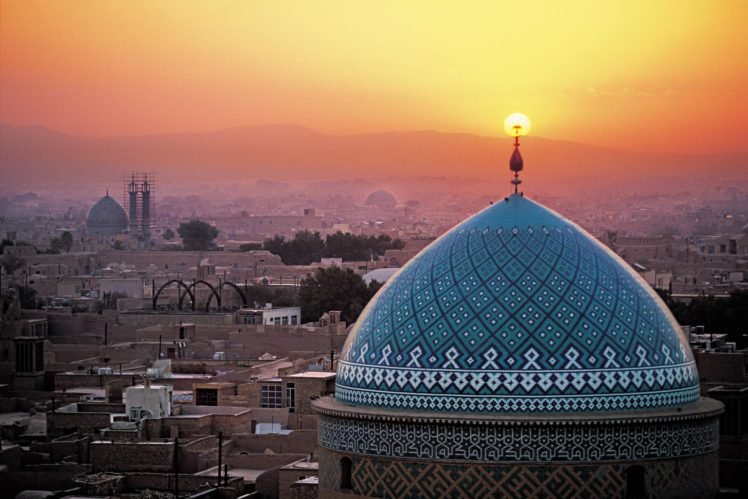
The Long Journey from Yazd to Tihran
by Ali F.
It is a long and beautiful journey by train from Yazd to the capital city of Tihran in the northern part of the country, where the BIHE classes take place. On the trip, I pass through six other cities, the central deserts of Iran, and different landscapes and geographies too numerous to mention.
My journey normally starts at 6:00 a.m. since the train always leaves on time. The station where I board is inside the city limits so I have to pass through residential neighborhoods to get there. I can easily see which houses have early risers and which don’t. Those who wake up at dawn have turned on their lights or sprinkled their courtyards with water, while the houses of those who still sleep sit dark and quiet. As soon as I leave the city, I enter a wide dry desert with endless brownish yellow sand and the occasional green spot made by desert plants.
At some times of the year, I can see the full sunrise, which is magical. Just before the sun rises, the sky gradually changes color, from red to orange, then suddenly the first bright rays appear over the horizon, transforming the red glow of the sky to a light blue. As the sunshine reaches my face, the light dazzles my eyes and warms my skin, and I feel joy at being an early riser, a witness to the first light of morning.
The closer I come to Tihran, the more green plants and farm lands I can see. After passing the city of Naeen, I see cotton fields. They stretch out on either side of the train like great green cloths dotted with white polka dots. Farmers work on the land and sometimes they raise their heads to glance at the passing train. Some of them wave to me, and I wave back. The honesty and simplicity of rural people is so admirable.
Before arriving in the Tihran Railway Station, I pass through the urban areas of the city. Small houses like tiny cubes stuck together form the heavily populated poor neighborhoods. Wet clothes hang in front of windows and children are playing in the dust and dirt. It seems that the capital has confined all its poverty to the suburbs in order to maintain the beauty of its luxurious downtown.
On this long journey, I come from the calmness and silence of the desert to the noise and crowds of the capital city. At first, the noise of the city seems shocking to me, but gradually I adjust to the change of scene, becoming more and more absorbed in the life of the city and always amazed by the giant buildings. The long and beautiful journey from Yazd to Tihran is almost like a pilgrimage for me — a journey to a sacred place, a place of learning, where I can sharpen my vision so I can see worlds far beyond Iran’s desert landscape.

